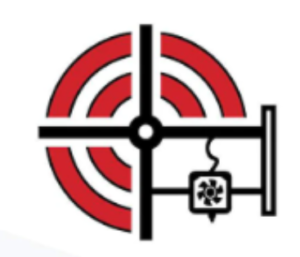In the spirit of a looming Even Greater Recession (Now With Superintelligence!), I decided to swaddle myself with some austerity. I figured that, in the future, we would need to focus even more on getting our printers to new austere locations, and that some belt-tightening would be required. I decided to prepare myself to temper my soul stoically. So, I took a Wizz. This is an airline, barely. Two hours of turbulence later, I felt I´d been a Leap71 part spun around a Solukon machine until all the powder got out. I arrived not at the familiar bustle of Frankfurt Airport, but rather Frankfurt–Hahn Airport. Much to my amazement, we need to worry more about the hope-devouring vortex of suck that is Frankfurt. I thought before that this problem, Frankfurt, would be a fairly localized phenomenon. A city of some regular size. Much to my surprise, however, Frankfurt is at least 123 kilometers in diameter. At least that is the distance from the city center to Frankfurt–Hahn airport. This would mean that the Frankfurt is an immense city, perhaps four times the size of Tokyo. Why are they hiding this from the world? Why is this being swept under the carpet? It must be stopped. Why is there no Godzilla for this godforsaken place?
Frankfurt–Hahn also has no taxis and is not available on any ride-sharing platforms. There is no public transport to the airport. I really felt as if the rug was pulled from beneath my feet. The building is, I think, a Faraday cage, and cell phone internet is therefore absent inside. I´ve heard that the economy is bad here, but if you can´t find a guy to drive you an hour and a half for $400, they must be doing something right. Entrepreneurial zeal, however, is not one of those things. I decided to take a bus. Flibco is a bus service (owned by Flixbus), with an app, and for $3 or sometimes $20, you can get a ticket instantly. For the American audience, a bus is like a large minivan for a few dozen people whom you may not know. Flibco does not own or operate the buses; it just devises routes, markets its services, and hires the bus companies to do the actual driving. And their routes are interesting, from college towns to semi-far-off cities or from airports that you can only leave by friend, foot, or plane. Two hours and fifteen minutes later, I arrived in Frankfurt.
s’agenouiller à cru
I got into the Taxi and was ready to enjoy at least this little memory of a time eroded, when I realized that I had forgotten my suitcase on the bus. The driver promptly turned and managed to interject in between some expletives, while doing so, he told me, ¨Don´t stress, it won´t make it better. Be calm.¨ Had he said this in the wrong tone, I fear that you would have awoken to a headline ¨taxi driver beaten to death with copy of Metal Additive Manufacturing for Propulsion Applications.¨ But, he said it in a soothing, somehow, in a reassuring way, I instantly breathed deeper and slower. And slower still when minutes later the helpful bus company employee handed me my bag.
This would be my mantra for the new age. ¨Don´t stress, it won´t make it better. Be calm.¨ And suddenly those gentlemen huddling around a spoon were probably folk musicians playing said spoon, and that gentleman who took off at a blistering pace when the siren sounded was probably running to help the police. I did find my heart go a bit adagio at the sight of the Marriott, knowing that I was not staying there. I thought if I wore two sweaters and left my jacket at the hotel, people might think I was still staying at the Marriott? Chin up, I entered the Champ Bar, got a real red carpet treatment from the great staff. The Champ, one of the few cash-flow-positive, growth businesses in additive. Where have all the billions gone? Did we really spend it all on canapes, chicken pieces on sticks, and hope? In the end, there was catering? Yes, the carpet-baggers are gone, but at what cost?
Floor Walking
Walking the Formnext floor, I saw many filament and powder companies. Several new LPBF manufacturers that I didn´t know, and new SLA, binder jet, and Material Extrusion machines. One Material Extrusion system was by HP, which was puzzling but makes sense in a growth and market-extension way. There were also interesting firms like Primes, which sell laser power meters and filtration, extraction, and air-blowing products from Elektror. I like these firms that can leverage decades of expertise to make our products better.
To my utter astonishment, a trip to the bathroom led me to my greatest discovery. Next to Hall 12.0 there was a driving range. What a fantastic idea! The Cobra Golf guys must have put that in to test their new drivers. I tried to find Ryan to congratulate him, but sadly could not. Later off of 12.1, I found something even more surprising, a rifle range. I immediately went looking for my colleague Scott because I thought that this could be the perfect place to test suppressors. After all, we are a suppressor industry with a sideline in teeth. You could do like an America´s Test Kitchen with guns here at this substantial range. Imagine that, a gun range! Take that IMTS, you don´t see that at Rapid. Obviously, America Makes must have put that in. How thoughtful of them. Speaking of drones, you won´t believe it, but next to another hall, there is an immense drone-testing area. You can fly all your drones there, up to Group 3 UAS, easy. Maybe play a little game of catch the intern or something. And the loveliest touch, I have to believe, was added by ADDIMAT. It was endearing to see a trinquet off of one of the halls. A fabulous trinquet, the likes of which have rarely been seen in Valencia itself. I would not have dared to dream that my twin passions of Pilota Valenciana & 3D printing would embrace. Playing Pilota in Frankfurt, my Valencian friends would scarcely believe such a thing possible, thank you ADDIMAT! You really rolled out the carpet for us this year! After being carpet bombed by Keyence flyers, I soldiered on. Keyence, by the way, does not manufacture any of its products, which are factory automation products. It is $4.9 billion revenue company that focuses on sales and has gross margins of around 82%.
My Favorite Things of Formnext
I´m actually shocked that my favorite thing at Formnext 2025 is a Materialise product, Brix. Brix lets you use Python scripts, manipulate nodes, and work with prebuilt elements to make workflows. You could do a costing workflow, or do a costing workflow that takes into account your shifts and employee availability, or a QA one, or make your own Additive Business Intelligence tools. Brix uses Materialise’s 3-Matic, Magics, and Build Processor functionality, opening it up to you. You could develop new geometries or use it to customize a particular heat exchanger repeatedly. I love this so much because we have so much to learn about costing, process variables, and planning. Brix can generate an infinite dashboards, but also save us from a lot of rote work. A lot of people spend too much time processing the same files the same way.
My favorite hardware thing at Formnext was OneClickMetal´s 500W MPRINTpro. The turnaround time is 5 minutes, and you can refill the powder while printing. It’s great to see just how well-made and simple to operate the machine has become. OneClick is making our market bigger, more accessible, while increasing the profit velocity of our industry. It’s quicker to set up, easier to use, and consumes far less capital, at 120,000 Euros ($180,000 in the US). I know of several companies where people with no LPBF experience have bought this machine with savings and built businesses around it. In suppressors, the machine may pay for itself in half a year. I really think that this is the future of our industry.
My favorite part was the Wheelchair seat at Carbon. This is such a fantastic product and they could bring it to market. Carbon now has a network of efficient contract manufacturing partners and has gotten good at working with firms to develop consumer products. Now, with better pricing for high volumes, a lot more products will be possible. I´m a noted Carbon sceptic, but in seeing their development and the comfort and utility of some of their parts really made me a belated fan. With better efficiency and lower costs Carbon is going for larger volumes using, in particular, elastomeric lattices that can be optimized for desired outcomes. The firm has been on that path for a number of years, but success in applications takes skills and time.
Make the Market Bigger, Do Actual Working Products, Be Wizz
For most of us, a low-capex environment amid global uncertainty will feel a bit unheimlich. There is a gnawing uncertainty, discomfort actually, when all is unsettled. The answer to this is to find a sure footing on your own terms, to own the moment no matter how dark the sky above or how hazy the path seems. And this will feel familiar to you now but, we have to make it easier for people to give us money. So, for a software product like Brix, sure, you can sell it to the usual suspects, but you can also use it to build web-enabled services that are Freemium and available for low monthly subscriptions. An ideal part to cast workflow for jewelry, an ideal scan to socket design workflow for orthopedics, a costing tool for business people getting their head around additive for the first time, tools showing you the yield of every machine of a given part, super realistically. These things all have value and as stand-alone tools will be accessible, easy to use, and inexpensive while opening up the software market, in effect creating a new class of offerings for everyone without cannibalizing sales of the full solution to the happy few.
For services, materials companies, and OEMs, I´d urge them to create products as well and sell them directly or through partners. This is a faster way to make money. Carbon should just make brands for some of its products and sell these directly. Service bureaus, too, can make products or partner with customers to have a series of products to sell. System sales can no longer be the motor of our industry. Uncertainty is the new normal; CapEx will always be depressed as a result. Applications must drive growth, and then in their wake, materials, software, and systems will grow. Through accelerating the speed of profit-making and making bite-sized pieces for people to buy, we can thrive. Flixbus doesn´t drive or own the buses; it is a platform that takes a little money from one person at one moment, aggregating that sale so that the asset it doesn’t own is filled more profitably than its 1000 partners could do by themselves. It makes routes that don´t exist to unlock pent-up demand when other transport systems take too long, are not available, or are cost-prohibitive. The system must have reach and marketing muscle to fill the buses because having them unfilled is underutilizing the asset, letting in new competitors, making its partners uncertain, and reducing profitability. It needs to be filled and optimally priced to work, like Wizz Air, Ryanair, and more. Ryanair has profits of 1.92 billion euros in 2024 with 183 million passengers, a profit of around 10 euros per passenger. While flying $100 million aircraft ten kilometers in the sky, with around six staff flying in and out of Frankfurt twice a day. Imagine going to Frankfurt twice a day. Sure, our challenges are hard, but it’s not that hard.
The Printer Should Always Print
But, we have to treat our machines and services in the same way. How do we reduce the fungibility of it? How do we get more people to become customers so that are machines are always filled? How do we do cheap? Can we get ten guys in a skunk works and make our version of the OneClick system for our market? Can we create a new arm with an entirely different cost structure? How do we take our product and make it unmissable for millions of desktop users? Can we make applications? Are we fools for thinking that this means we make a general demo part and move on? Or do we understand that we need product market fit and advantages for the whole value chain for a successful application? In addition to outperforming on the component level, we have to win on the system level too. Which applications do we believe in, but we´ve never gotten the market interested in? Maybe they´re too expensive, how do we reduce that? Maybe we can be the disruptor in arm braces, computer mice or mouth guards. All of us in this industry could become a Keyence, of a particular product or niche, deploying our technology where it meets the market and making without having to own any factories. Where can you win with Additive? How do we turn dust into gold? How do we look inside our gleaming boxes and see the makable within? We have to start by sensing that a printer that’s not doing anything should be made to do something. I don´t have all the answers, but snug as a bug in a rug, typing this as my brain whirrs from all the wonderful people, learnings, and conversations, I can see the way forward. Don´t stress, it won´t make it better. Be calm.
Subscribe to Our Email Newsletter
Stay up-to-date on all the latest news from the 3D printing industry and receive information and offers from third party vendors.






